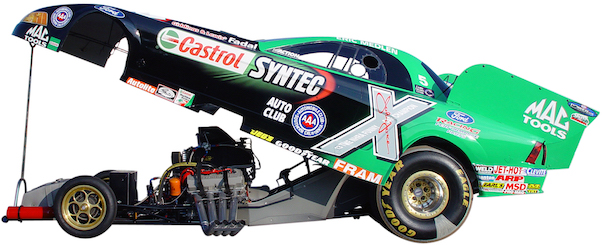Race Car Race Car Race In Kenya
The East African Safari Classic Rally is the most challenging and exciting motorsport event in the world. Known for its unique combination of rugged terrain, historic cars, and incredible endurance, the event attracts both local and international participants. The rally has evolved from its roots as the prestigious East African Safari Rally into a celebrated classic event. Today, it continues to showcase the best of East Africa’s natural landscapes and motorsport culture.
History of race car race car race
The origins of the East African Safari Classic Rally race car race car race can be traced back to the early 1950s. The first East African Safari Rally was held in 1953, and it quickly became a major event in the motorsport calendar. Initially, the rally was a grueling test of both driver and car, covering thousands of kilometers through some of the toughest terrain in the world. It wasn’t long before it gained international recognition as one of the most demanding rallies on the planet.
Over the years, the event grew in both prestige and complexity. The rally included a mix of tarmac and gravel roads, with stages often lasting for days. Drivers faced unpredictable conditions, ranging from muddy roads to intense heat and altitude changes. The rally became a proving ground for both man and machine, testing endurance and resilience like no other event. However, as the years passed, changes in regulations and the rise of modern rallying led to the East African Safari Rally’s eventual transformation.
The revival of the East African Safari Classic Rally
In the 2000s, the East African Safari Rally made a triumphant return in the form of the East African Safari Classic Rally. This new format was aimed at reviving the spirit of the original rally while focusing on classic cars. The event, first held in 2003, attracted vintage rally cars that were built for the challenges of the original Safari Rally. These classic cars, many from the 1960s and 1970s, brought a nostalgic element to the event.
The focus on classic cars helped reintroduce the event to a new generation of motorsport fans. It combined the thrill of rally racing with the charm of vintage machinery. The event maintained the challenging elements of the original rally, such as long distances, rough roads, and unpredictable weather. However, the race cars were older, and the drivers had to demonstrate even greater skill in managing the classic cars through such demanding conditions.
Challenge of the Safari Classic Rally
What makes the East African Safari Classic Rally stand out is the sheer difficulty of the terrain. Unlike modern rallies that may feature more controlled environments, this rally is unpredictable and often brutal. The race takes participants through Kenya, Tanzania, and Uganda, offering some of the most scenic yet treacherous landscapes in the world. From the dusty plains of the Maasai Mara to the dense forests of Uganda, drivers face an array of challenges that push both their vehicles and their endurance to the limit.
The rally spans several days, covering hundreds of kilometers on mixed surfaces. The vehicles often travel through areas with little infrastructure, testing the skills of the drivers and the reliability of the cars. The unpredictable weather, from sudden rainstorms to extreme heat, can turn a straightforward stage into a nightmare. Many classic cars struggle with the extreme conditions, making mechanical failures a common occurrence.
Cars of the East African Safari Classic Rally
The cars used in the Safari Classic Rally are a key part of its charm. Unlike modern rally cars built for speed and precision, the classic cars in this rally have character and history. Most of the cars competing are from the 1960s and 1970s. These vehicles were designed to endure rough roads, with heavy suspensions and robust engines. Some of the most iconic cars featured in the rally include the Ford Escort, Porsche 911, and the Toyota Land Cruiser.
The event has become a haven for vintage car enthusiasts, who see it as an opportunity to showcase their restored and preserved cars. The vehicles are not just symbols of the past; they also offer a glimpse into the evolution of rally car engineering. Drivers and teams often spend months preparing the cars, ensuring they are equipped to handle the grueling stages of the rally. Every turn, every bump in the road, and every dust cloud becomes a testament to the strength and endurance of these classic machines.
Route and locations
The route of the East African Safari Classic Rally is designed to test every aspect of the participants’ skill set. The rally usually takes place over several days, with drivers covering multiple stages each day. The route is not just about distance; it’s about navigating diverse and challenging terrains. The rally traverses through Kenya, Tanzania, and Uganda, each country offering its unique set of obstacles.
In Kenya, the rally takes participants through the breathtaking landscapes of the Great Rift Valley, which is famous for its rough, uneven terrain. The route also passes through regions like the Maasai Mara, where drivers contend with both wild animals and unpredictable dirt roads. In Tanzania, the rally travels through dense forests, dusty paths, and small villages. Uganda, with its winding roads and hills, offers a final challenge before the finish line.
The varying climates and terrains in each country add complexity to the race. Whether navigating the dusty plains or winding through lush rainforests, every section of the rally requires careful planning and adaptability.
Endurance and mental strength
Car racing, particularly a rally like the East African Safari Classic, is a test of physical endurance and mental strength. The participants in this rally are not just athletes; they are strategists, thinkers, and problem solvers. The hours spent behind the wheel require intense focus and concentration. Drivers must contend with constant challenges, including road conditions, navigation, and car maintenance.
Rally drivers in this event are required to endure long hours of racing, often in harsh conditions. They also have to manage the mental stress of leading in a race, dealing with mechanical breakdowns, and facing competitors who are equally determined. Mental preparation is as critical as physical stamina. The relentless pressure can cause even the most seasoned drivers to feel the strain.
Spectators and fans
The East African Safari Classic Rally has a large following of fans who eagerly await the race every year. These fans, both local and international, gather at various points along the route to witness the action firsthand. Spectators often camp along the race stages, watching the cars whiz by and cheering on their favorite drivers. The atmosphere around the rally is festive, with music, food, and a sense of community shared among fans.
For many, watching the rally is as much about experiencing the culture of East Africa as it is about the racing. The landscapes and wildlife add a unique flair to the event, making it more than just a motorsport competition. The Safari Classic Rally has become an event that not only showcases the prowess of the drivers but also promotes the beauty and diversity of East Africa.
Legacy of the East African Safari Classic Rally
The legacy of the East African Safari Classic Rally is far-reaching. It continues to preserve the history of the original Safari Rally while modernizing the sport for a new generation. The event has also become a platform for environmental and cultural awareness, bringing attention to the unique landscapes of East Africa. The rally’s ability to combine motorsport with exploration makes it a one-of-a-kind event in the motorsport world.
Additionally, the Safari Classic has paved the way for other motorsport events in East Africa. It has inspired the creation of similar events and has been instrumental in promoting the region as a destination for motorsports enthusiasts. The rally’s long-standing tradition serves as a reminder of East Africa’s rich history and its ongoing contribution to the global motorsport community.
Future of excitement and adventure
As the East African Safari Classic Rally continues to grow, its future looks bright. The event will likely attract more participants, fans, and sponsors, cementing its place as one of the premier motorsport events. With ongoing advancements in rally car technology, the event will remain a thrilling challenge for participants. The rally will also continue to provide a platform for celebrating the beauty and diversity of East Africa.
Enduring appeal
The East African Safari Classic Rally remains an iconic event in the motorsport world. Its combination of history, excitement, and endurance continues to captivate car racing fans from all corners of the globe. The rally’s legacy, its cultural significance, and its thrilling challenges ensure that it will remain an unforgettable experience for both participants and spectators for years to come. For those seeking an unforgettable adventure, the East African Safari Classic Rally is a race unlike any other.
Expose your brand at the East African Safari Classic Rally05 – 13 December 2025
|






